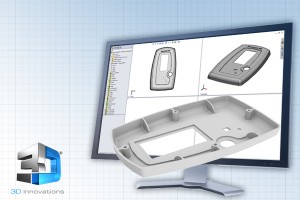We recently came across a white paper by National Instruments titled, “Six Good Reasons to Prototype” and wanted to share it with you. Nothing is more exciting and exhilarating than coming up with a brilliant idea. However turning that idea into an actual product can be more challenging than you might expect.
 The journey from concept to market is typically a long road riddled with hidden obstacles and unforeseen turns. Building a quick prototype of a design can help smooth that path as well as present some other benefits.
The journey from concept to market is typically a long road riddled with hidden obstacles and unforeseen turns. Building a quick prototype of a design can help smooth that path as well as present some other benefits.
Why Prototype?
1. Fail early and inexpensively – Real innovation always includes a risk of failure. Thomas Edison once joked, “We now know a thousand ways not to build a light bulb.” By building a prototype, you can quickly weed out the approaches that don’t work to focus on the ones that do.
2. Gather more accurate requirements – Almost half of all project costs are attributed to rework due to inadequate requirements. Traditional requirements gathering techniques such as interviews and focus groups can fall short because many people find it difficult to conceptualize a product before they see it. By developing a working prototype, you can demonstrate the functionality to help solidify requirements for the final design.
3. Technically understand the problem – It is unfortunate that system architecture must come so early in the design process because time only enhances your understanding of the problems that you may encounter. Have you ever thought, “If I could go back in time, I would change … ”? By developing a functional prototype, you are forced to address both the foreseen and the unforeseen technical challenges of a device’s design. Then, you can apply those solutions to a more elegant system design when you move to the final deployed solution.
4. Resolve conflicts – The best engineers have strong opinions about how a given feature should be implemented. Inevitably, differences of opinion result in conflicts, and these conflicts can be difficult to resolve because both sides have only opinions, experience, and conjecture to refer to as evidence. By taking advantage of a prototyping platform, you can quickly conduct several different implementations of the feature and benchmark the resulting performance to analyze the trade-offs of each approach. This can save time, but it also ensures that you make the correct design decisions.
5. Rally financial support – In the years since the dot-com bubble burst, investors such as venture capitalists have grown more risk-adverse when investing in start-ups. Even within larger companies, internal projects face similar scrutiny from executives looking to maximize revenue. By developing a prototype to demonstrate the feasibility of your idea, you lower the risk of investment and therefore increase the probability that your idea will be funded.
6. File patents more easily – Before 1880, all inventors had to present working models or prototypes of their inventions to the patent office as part of the patent application process. Today, the United States Patent and Trademark Office uses the “first to invent rule,” which grants a patent to the first inventor who conceives and reduces the technology or invention to practice. Though no longer required, a prototype is still the best and safest way to demonstrate “reduction to practice.” Furthermore, key components of a patent application, such as patent drawings and the inventor’s logbook.
The full white paper is available on the National Instruments website.
If you would like more information about prototyping or have questions, please feel free to e-mail us at info@3d-innovations.com
________
3D Innovations is a full service 3D Engineering/Design company – from the 3D Design to a fully functional 3D Prototype & Product.

